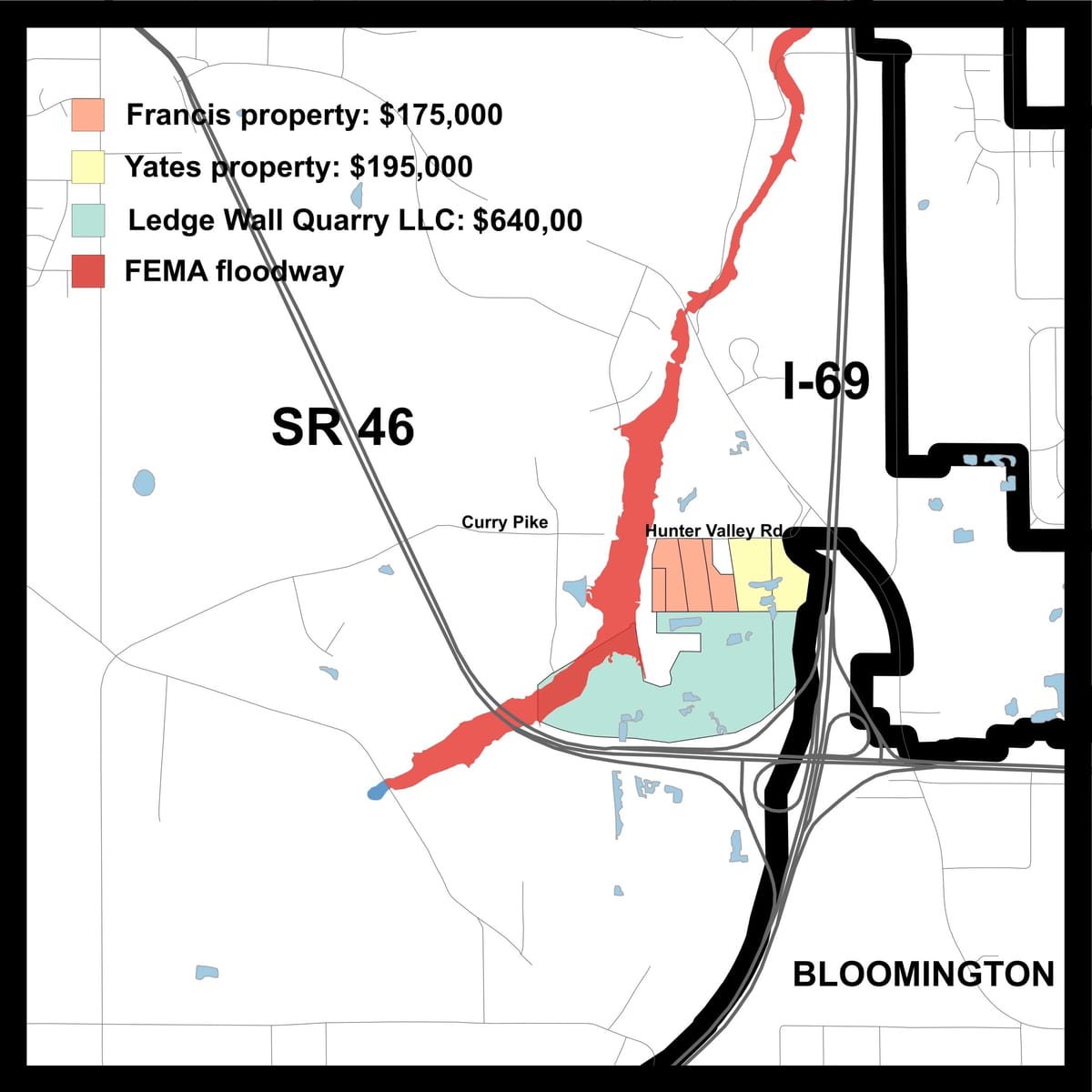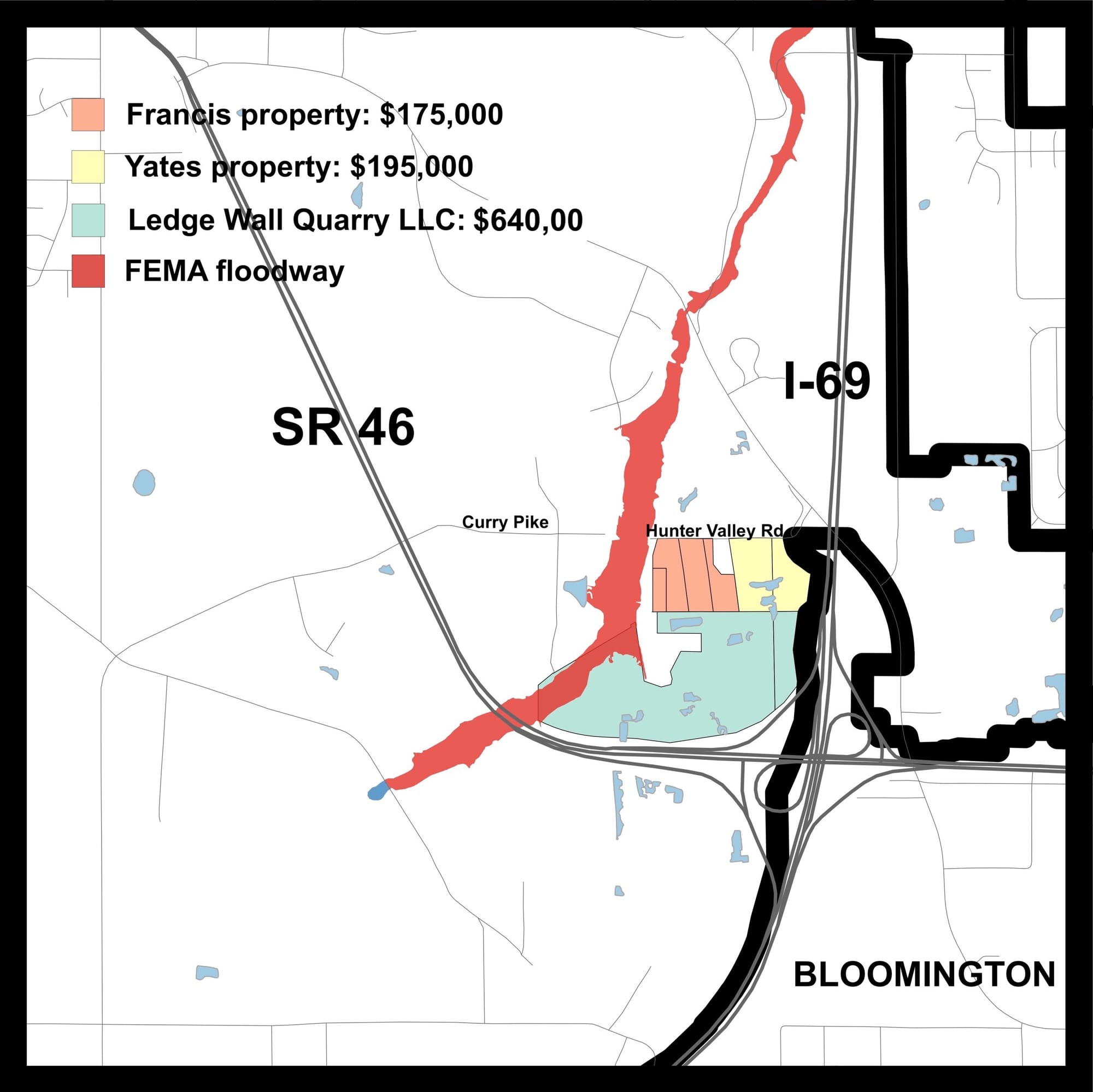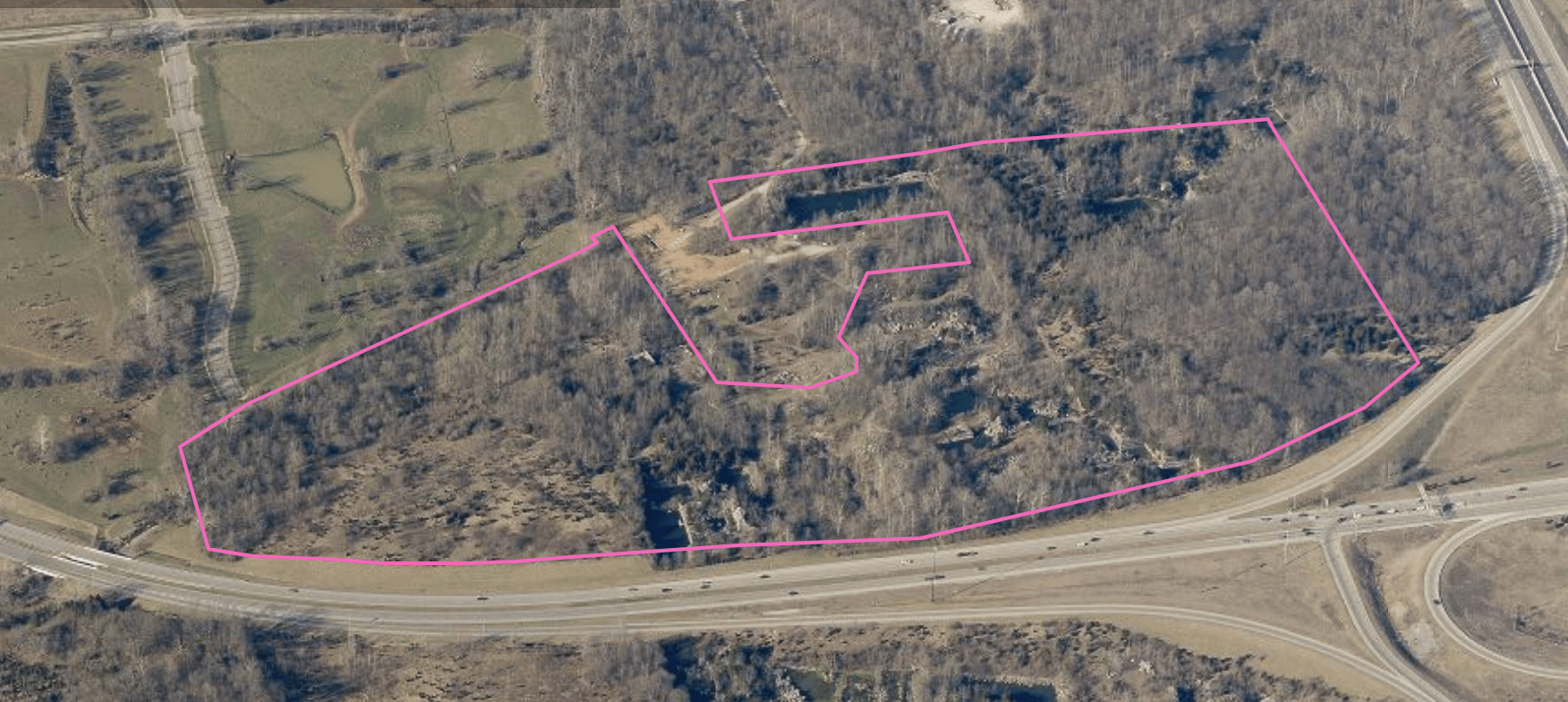Planned limestone heritage site now under Monroe County control, as $600K land purchase gets final OK



Monroe County will now own another 70 acres of land at the northwest side of the interchange of SR-46 and I-69.
On Tuesday, the county council approved the $640,000 purchase of the land, which contains several limestone quarry holes.
The purpose of the land acquisition is to establish the location as a kind of outdoor limestone museum that celebrates Monroe County’s heritage of high quality limestone, and the role the limestone industry has played in local history.
The tally on Tuesday’s vote by the seven-member council was 5–1. Councilor Marty Hawk dissented. Councilor Cheryl Munson was absent.
The 70-acre parcel is just south of another 29 acres, which were purchased by the county in fall 2021 for the same purpose.
Hawk’s objections were known, based on the land’s history adjoining an EPA Superfund site.
The three-member board of county commissioners gave its approval for the land purchase at its meeting three weeks ago.
The funding for the land acquisition comes from issuance of a general obligation bond issued in 2019.
But the funding for the development of the site as a tourist destination will come at least in part from the Monroe County government’s share of the 1-percent food and beverage tax (FBT).
In 2019, the food and beverage tax advisory commission (FABTAC) approved the use of up to $500,000 in FBT revenue on the limestone heritage project.
Councilor Geoff McKim—who has been a solid supporter of the limestone heritage site since discussions began a few years ago—said on Tuesday that he thinks there are other, higher-priority uses for FBT money.
Now that the land for the limestone heritage center is under the county’s control, McKim said he thinks its development will involve a very long process, including a lot of public engagement—to come up with a community vision and master plan for it.
So McKim thinks there are higher priorities for spending the county’s share of FBT revenue. As one example, McKim gave upgrades to the soccer facilities at Karst Farm Park.
McKim said the highest priority for FBT revenue would involve the city of Bloomington’s share of FBT revenue—which is an expansion of the Monroe County convention center. About the use of FBT revenue McKim said, “Of course, I think the highest priority should be to get the convention center rolling.”
The convention center expansion supposed to be a joint project of the Bloomington and Monroe County governments, but it stalled before the COVID-19 pandemic hit in March 2020. The two sides disagreed over the composition of a capital improvement board to govern the project.
While the city of Bloomington is planning to use its share of FBT revenue to fund the project, Monroe County’s contribution would come in the form of county-owned land. Some of that land is the parcel where the former NAPA building is located, which the county has now converted for use as an election operations center.
It’s not clear if the former NAPA building will be used for municipal elections in 2023 or in 2024, which is a presidential election year.




Comments ()